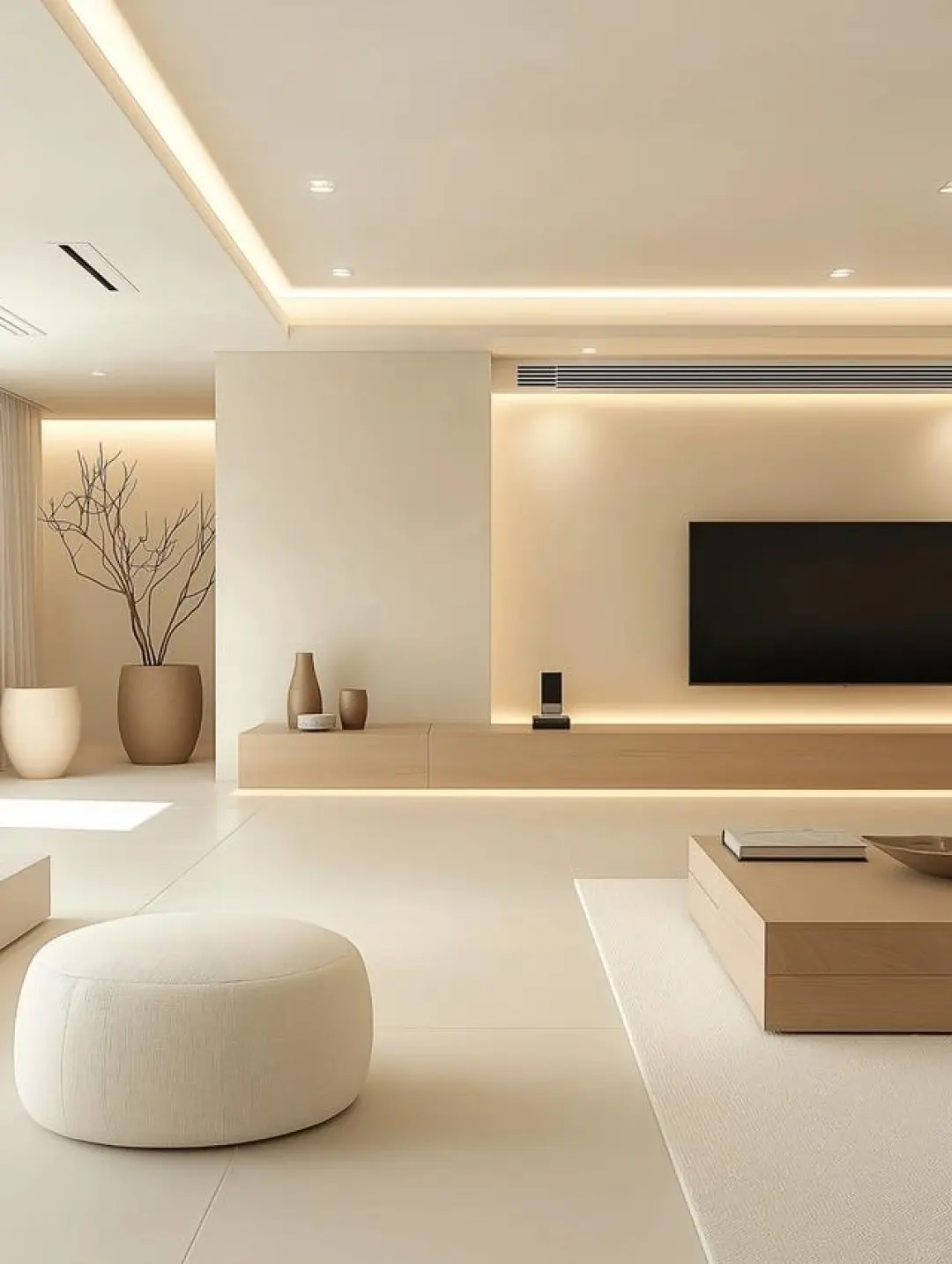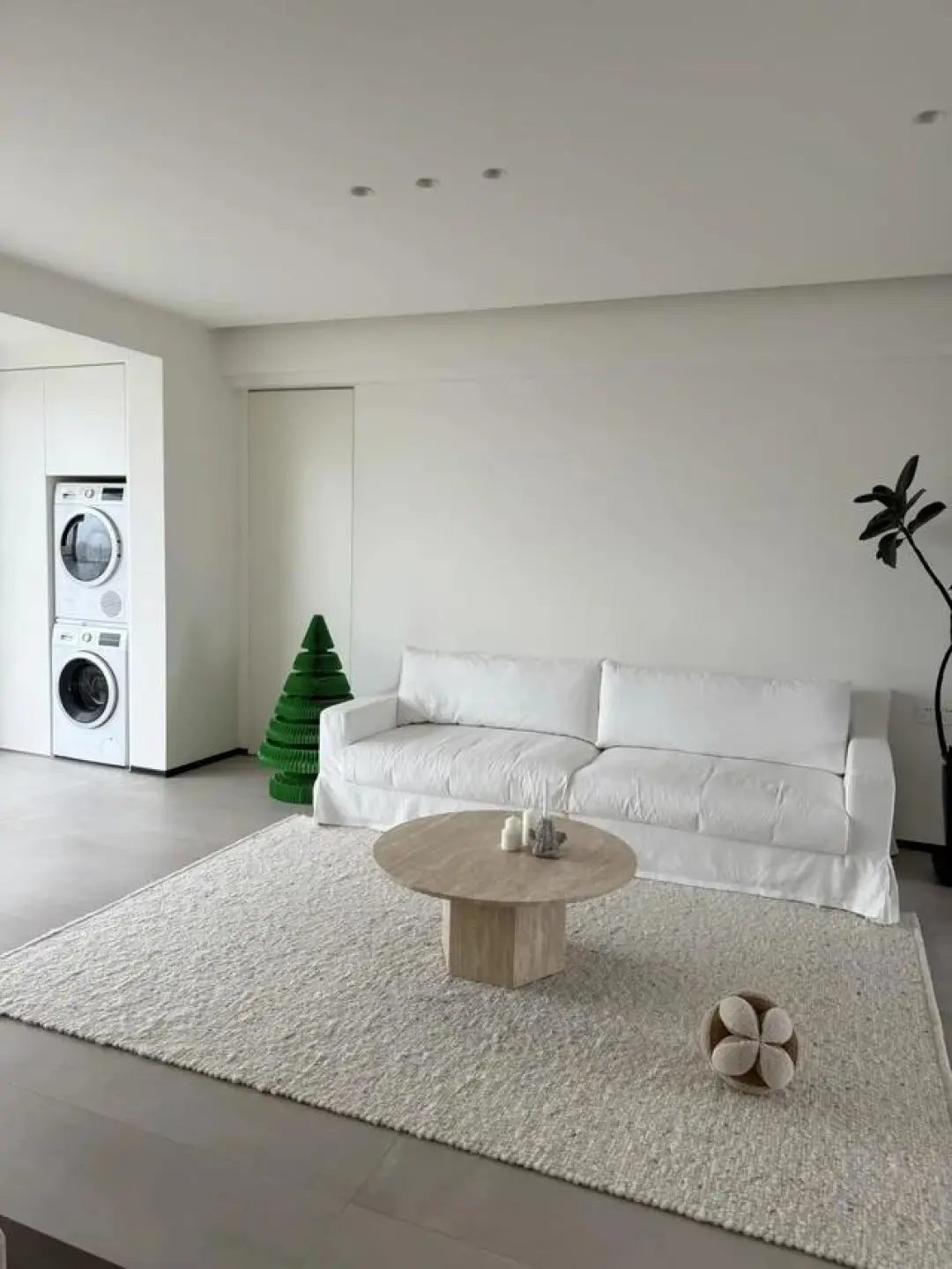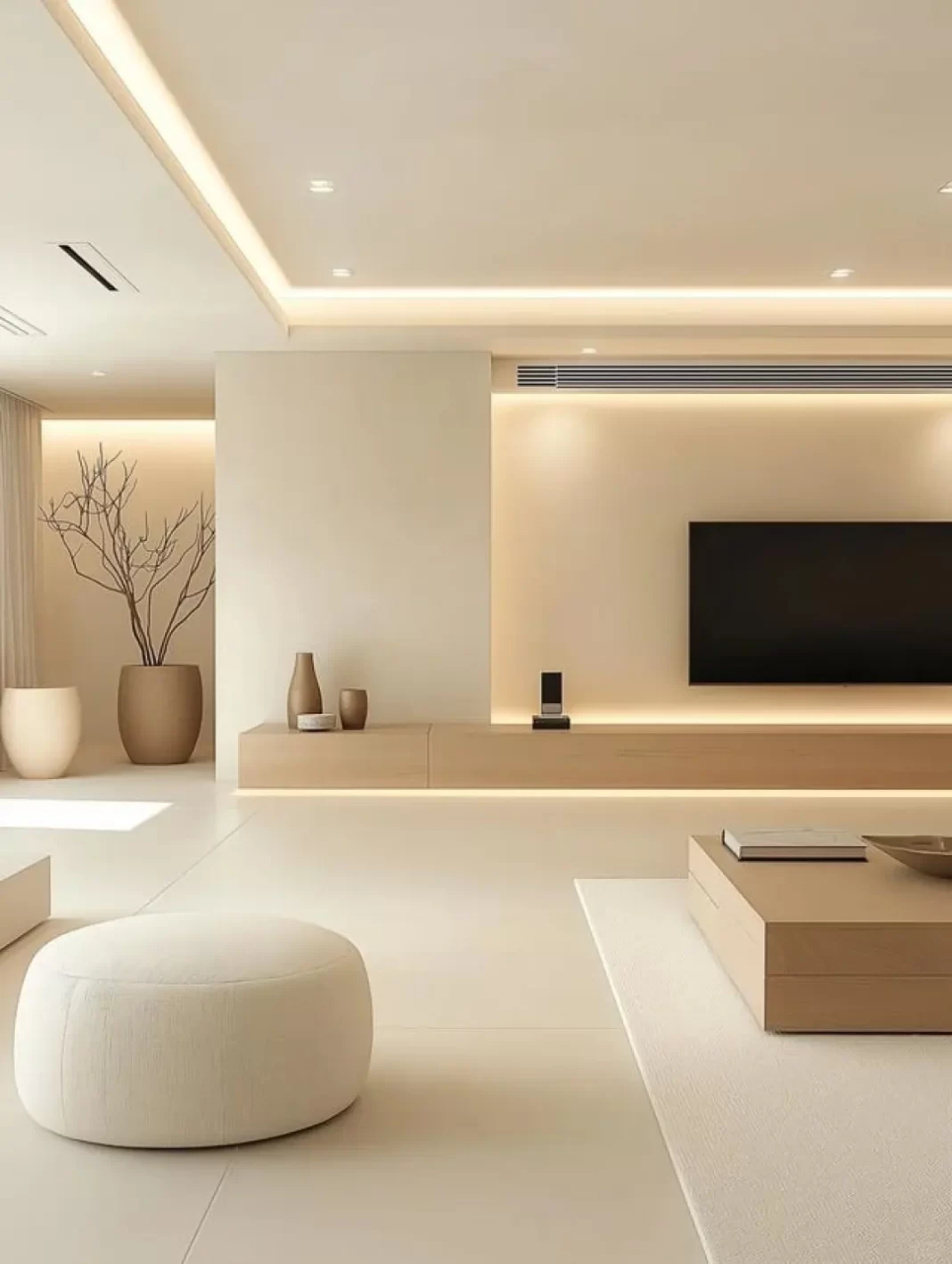Minimalism, as a home design style, has been gaining immense popularity in recent years. Especially in the fast-paced urban life, its simple and pure design philosophy brings an unparalleled sense of tranquility and comfort to living spaces. This article will delve into how to create a minimalist home environment.
The Essence of Minimalist Design: Less is More
The core of minimalist home design lies in “reducing complexity to simplicity,” emphasizing functionality, spaciousness, and the texture of materials. When it comes to color choices, minimalist styles favor neutral tones such as white, gray, and beige. These colors create a clean and refreshing visual effect. For instance, in a 167㎡ minimalist residence, the designer used gray oak flooring combined with a black, white, and gray color palette, making the space feel both sophisticated and welcoming. Through the application of these colors and the selection of materials, the entire home environment appears concise yet rich in texture.
When it comes to hardscape design, minimalist homes emphasize clean and fluid lines, steering clear of complex carvings and ornamentation. They use straight lines and simple geometric shapes to sculpt the aesthetic beauty of the space. For example, in a modern minimalist flat designed for a riverside apartment, the combination of a flat ceiling and a no-main-light design avoids visual clutter. Meanwhile, hidden light strips and spotlights create a soft, inviting lighting atmosphere, making the space feel both simple and layered.

The choice of materials is also crucial for minimalist home design. Generally, the minimalist style emphasizes the natural feel and texture of materials like wood, stone, and metal, using their contrast to add layers to the space. When selecting materials, opt for those with simple textures and clean lines, such as wood, metal, glass, and stone. These materials not only enhance a modern feel but also elevate the overall quality of the space. For example, in many design cases, you’ll often see the combination of raw wood and natural stone, which not only boosts the overall texture of the space but also conveys a sense of natural beauty.
In terms of space layout, minimalist home design stresses openness and fluidity. By reducing partitions and adopting an open-plan design, different functional areas can merge seamlessly, enhancing the flow of the space. For instance, an open-plan kitchen and dining area can visually expand the space while also encouraging more interaction and communication among family members. When selecting furniture, low-profile pieces with clean lines can reduce visual clutter, making the space appear taller and more spacious. This design approach creates a home environment that is both practical and comfortable.
Storage design is another key focus in minimalist home aesthetics. Minimalism advocates the beauty of “concealment,” using clever storage solutions to make the home appear tidier and more organized. For instance, Italian minimalist home design particularly emphasizes hidden furniture designs, such as using handle-less cabinets with a pure, skin-like finish. This maintains a seamless, integrated look between walls and cabinetry, making it both beautiful and practical. Through such meticulous design, the living space appears more concise and elegant.
Lighting design also plays a crucial role in minimalist homes. Thoughtful illumination can enhance the sense of depth and warmth within a space. For example, modern minimalist homes typically incorporate linear light sources and soft lighting designs. Hidden light strips and spotlights are often used to create a warm ambiance, preventing the space from feeling overly stark or cold. Some design examples also leverage natural light, utilizing large glass windows to bring in more natural light, making the space brighter and more transparent.

When it comes to soft furnishings and decor, minimalist homes favor a “less is more” approach. Simple greenery or abstract art can add layers and personality to a space. When choosing decorative items, it’s essential to ensure they harmonize with the overall style and to avoid excessive clutter. For example, some designs use minimalist sculptures or abstract paintings as accents, elevating the artistic ambiance of the home while maintaining its overall clean aesthetic.
Minimalist home design isn’t just a decorating style; it’s a lifestyle. Through thoughtful design and planning, we can make our homes more comfortable and tidy, allowing life to return to its essence and finding inner peace and satisfaction. We hope this discussion has provided valuable information and design inspiration for readers who appreciate the minimalist style. Let’s work together to create a minimalist home that’s both beautiful and functional, and enjoy a more tranquil and comfortable life.


